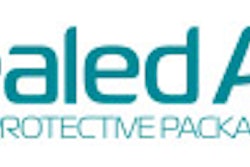Changing from batch production of patient monitoring systems to building and packaging them on-demand to meet sales orders led to a switch in the packaging used to protect the $4,500 to $7,500 medical devices in transit. That move is saving money for Issaquah, WA-based monitor manufacturer Spacelabs Medical, a division of Spacelabs Healthcare. The new elastomeric Korrvu® packaging from Sealed Air (www.sealedair.com) also helps Spacelabs’ global hospital customers more easily discard the materials.
Jaime Cardenas, master production scheduler at Spacelabs, explains, “With batch production, we built anywhere from 100 to 200 units at a time. Now, we only build to actual sales orders as we need them.”
That switch, he says, “saves 400- to 500-square-feet of space in the Isaaquah facility. “When we used fabricated polyethylene and polyurethane die-cut foam, we had to store large boxes of them,” says Cardenas. At one point we leased warehouse space because we didn’t have enough space here. Plus, we moved here from a larger facility a couple of years ago where we had plenty of space.” He estimates the newer facility is about 10,000 square’. “We now can store other finished goods or other products in that space,” Cardenas says.
Labor savings are another benefit of the switch to Korrvu. During batch processing, employees created makeshift assembly lines to put together packages of foam and corrugated shipping cases. “We weren’t really utilizing our employees [effectively], or packaging the units in a timely manner,” Cardenas admits.
Although specific labor comparisons between batch and on-demand packaging aren’t available, he conservatively estimates that the change provides Spacelabs with a 10% savings.
Manual packaging process
Space and labor advantages reduce costs by 40% and use one pack instead of three for Spacelabs’ three different sizes of monitors, which are measured much like that of a television screen.
Monitors are assembled, built, and packaged on three different lines that operate five days a week, one shift/day. Depending on the monitor, between four and 13 employees are used on each line, with one person actually packaging at the end of the line, a process that takes four to five minutes per monitor.
“Somebody is assembling the front of the monitor, somebody else produces the rear portion of it, and other people are putting boards inside of the unit,” Cardenas explains. “Other people are testing the product at different stages.” When a person is done with his or her task, he or she repeats the process with the next monitor. “We do switch tasks throughout the day so that everybody is not doing the same thing all day long,” he says.
A packager first assembles a regular slotted container (RSC) before adding monitor accessories to the box in a Korrvu retention package. The side flaps are folded upward so that the elastomer film in the retention package loosens. The worker places the accessories between the frame and the film, folds down the flaps, and the film stretches around the product to secure it. The accessory pack is moved to one side within the RSC.
“By the end of the line,” says Cardenas, “the unit is assembled, the monitor is tested and packed into a shipping case and taped shut.” Spacelabs ships individual units or stretch-wrapped pallet loads around the globe, although two of three destinations are within the United States.
Employees and customers approve
Cardenas recalls that before switching to the Korrvu system, Spacelabs considered honeycomb and kraft paper as alternatives to the die-cut foam. Spacelabs’ corrugated supplier and Sealed Air distributor The Box Maker (www.boxmaker.com) recommended the Korrvu system. The decision has proven popular, both with Spacelabs employees and customers.
“It takes four to five minutes to package one unit now,” says Cardenas. Comparing packaging time to the previous method, he notes, “is hard to gauge because before we would set up a whole bunch of boxes, lay them out on the floor and we would batch package. We never really sat down and timed how long it took to do that.”
Spacelabs is especially pleased with the switch to Korrvu because it benefits hospital customers. Says Cardenas, “We were searching for a packaging format that saved us space and was curbside recyclable [for hospitals] without sacrificing quality. It is an absolute requirement for our products to arrive at hospitals in the same state as when they left here.”
Cardenas says, “Korrvu accommodates recent European requirements for recycling. And it meets the biggest customer feedback issue in that they want recyclable packaging. We’re sending units to hospitals, and they don’t want to have to deal with foam. They couldn’t recycle it. The Korrvu materials are recyclable,” he says.
Another customer benefit, Cardenas notes, “is that the packaging can be used by a customer to ship a unit back for repair, or for any other reason. We made it easy for them to be able to re-send the unit or repackage the unit and then send it back to us.”
In short, “It’s much simpler to use and recycle, and it fits every aspect and specification we were looking for,” he says.


























